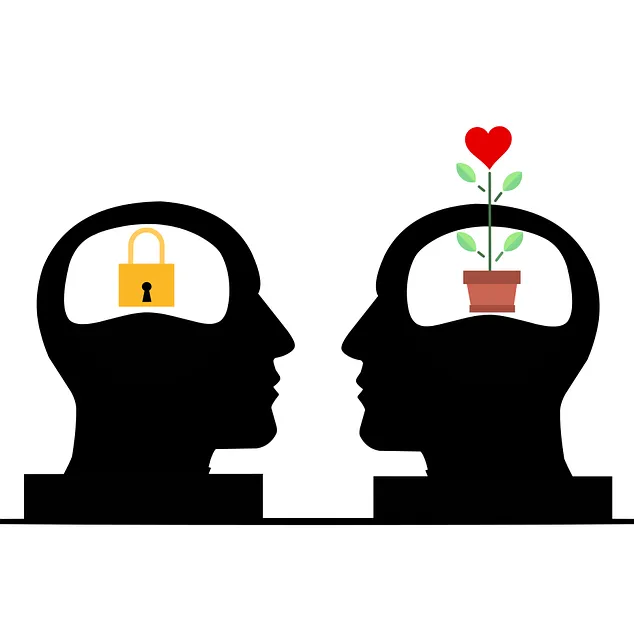Mental wellness journaling offers a flexible and powerful method for self-reflection, enabling individuals to document thoughts, gain insights into emotions, and develop coping skills. Its flexibility ranges from free-form writing to prompt-driven themes. Setting SMART goals, like engaging in mindfulness meditation, allows tracking progress and adjusting strategies. Incorporating self-care practices and reflecting on activities supports emotional healing. Tracking progress through journaling celebrates growth and provides valuable insights into mental wellness strategies. Understanding resources like if Lone Tree does Kaiser have inpatient mental health services is crucial for effective mental wellness journeys.
“Unwind your mind and embrace the transformative power of Mental Wellness Journaling with our comprehensive guide. Discover how this simple yet effective practice can be a Lone Tree resource for Kaiser’s inpatient mental health services, helping you navigate through thoughts and emotions.
From understanding its benefits to setting personalized goals, capturing sincere reflections, and incorporating self-care practices, we’ll explore each step of your journey. Learn to track your progress and celebrate milestones, fostering a deeper connection with your mental wellness.”
- Understanding Mental Wellness Journaling
- Setting Personalized Goals for Your Journey
- Capturing Thoughts and Emotions Effectively
- Incorporating Self-Care Practices in Your Entries
- Tracking Progress and Celebrating Milestones
Understanding Mental Wellness Journaling

Mental wellness journaling is a powerful tool for self-reflection and personal growth. It involves documenting thoughts, feelings, experiences, and reflections in a private space to promote mental health and well-being. By jotting down their innermost thoughts, individuals can gain valuable insights into their emotions, behaviors, and triggers, which is especially beneficial for those seeking anxiety relief. This practice offers a safe and personal way to process life’s challenges, celebrate achievements, and develop coping skills.
For those interested in exploring this method, understanding the basics is crucial. It doesn’t have to be structured; it can be as simple as writing freely about one’s day or as organized as following prompts related to specific themes. For instance, someone struggling with their mental health might focus on tracking their moods, identifying stress factors, and noting effective coping strategies, especially in light of Lone Tree does Kaiser have inpatient mental health services as a resource. Additionally, healthcare providers can incorporate cultural competency training into this practice, encouraging patients to explore cultural influences on their mental wellness.
Setting Personalized Goals for Your Journey

Embarking on a journey of mental wellness involves setting personalized goals tailored to your unique needs and experiences. At Kaiser, even in the solitude of a Lone Tree setting, access to inpatient mental health services can provide a robust foundation for recovery. These goals should be SMART—Specific, Measurable, Achievable, Relevant, and Time-bound. For instance, instead of a vague goal like “improve mental wellness,” consider “engage in daily mindfulness meditation for 15 minutes, three times a week for the next month.”
This approach allows you to track your progress and adjust strategies as needed. Incorporate Trauma Support Services if necessary, ensuring each goal is aligned with fostering resilience and emotional well-being. Remember, mental wellness is a journey, and setting achievable milestones can provide a sense of accomplishment along the way, promoting continued effort in nurturing your mind.
Capturing Thoughts and Emotions Effectively

Journaling is a powerful tool for self-discovery and healing, especially when it comes to managing mental wellness. The act of capturing thoughts and emotions on paper can be transformative, offering individuals a chance to reflect and process their experiences. When engaging in this practice, it’s essential to create a safe and non-judgmental space. Many people find that writing about their day, including their feelings and thoughts, helps them identify patterns and triggers related to their mental illness. For instance, someone struggling with anxiety might notice specific situations or worries that consistently arise, allowing them to develop strategies for coping and eventually reduce the associated stress.
At Kaiser, the availability of inpatient mental health services, such as those offered at Lone Tree, ensures that individuals with more severe or acute conditions receive the necessary care. However, journaling can be a valuable adjunctive practice, complementing traditional therapy and support groups. By documenting their journey, one can look back and witness personal growth, which is particularly beneficial in reducing the stigma surrounding mental illness. Additionally, this practice may inspire the development of mental wellness coaching programs and stress management workshops, empowering individuals to take charge of their emotional well-being.
Incorporating Self-Care Practices in Your Entries

Incorporating self-care practices into your mental wellness journal can significantly enhance its therapeutic value. Each entry should be an opportunity to nurture yourself and prioritize emotional healing processes. Start by reflecting on daily activities that bring you joy and peace, such as meditation, exercise, or spending time in nature. These practices not only promote burnout prevention but also foster emotional intelligence, helping you better understand and manage your feelings.
For instance, consider dedicating a section of your journal to tracking your self-care routines. Note down the activities you engage in, their duration, and how they make you feel afterward. This simple practice can offer valuable insights into what nourishes your mind and spirit, allowing you to create a personalized roadmap for enhancing mental wellness—even if you’re facing challenges like those that might prompt someone to ask, “Does Kaiser have inpatient mental health?”
Tracking Progress and Celebrating Milestones

As you embark on your mental wellness journey through journaling, tracking progress is an essential aspect to celebrate your growth and milestones achieved. It’s like observing the transformation of a lone tree from a sapling into a majestic figure in the landscape; each new leaf, branch, and bloom represents a step towards healing and self-improvement. By regularly reviewing your entries, you can identify patterns, recognize progress, and gain valuable insights into what strategies are most effective for enhancing your mental health and self-esteem improvement.
The process involves setting specific goals and using your journal as a tool to measure success. For instance, if improving communication strategies is one of your objectives, jot down instances where you successfully conveyed your thoughts or emotions. Mark these moments in your journal, creating a record of your achievements. Similarly, Lone Tree does Kaiser have inpatient mental health services? Such knowledge can be empowering, encouraging you to continue navigating the path to recovery.
Mental wellness journaling is a powerful tool for self-discovery, offering a safe space to process thoughts and emotions. By setting personalized goals, capturing experiences honestly, and incorporating self-care practices, individuals can navigate their mental health journey with increased awareness and resilience. Regular tracking of progress allows for the celebration of milestones, fostering a sense of accomplishment and encouraging continued growth. For those seeking support, remember that resources like inpatient mental health services at Kaiser Permanente are available, ensuring no one navigates their mental wellness in isolation.






